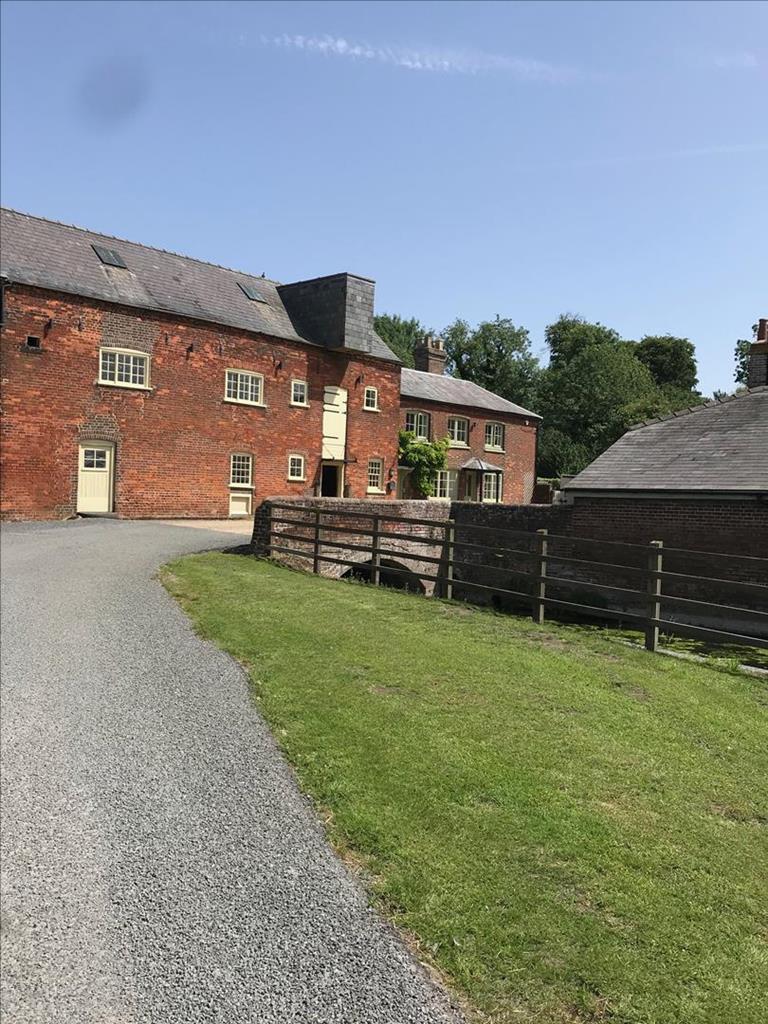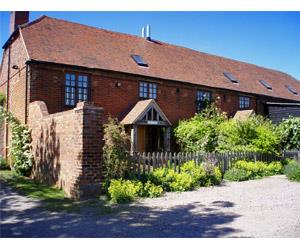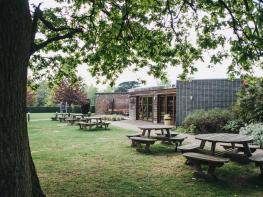Luton Hoo is a luxury hotel set in more than 1,000 acres of 'Capability' Brown designed parkland…
From Markyate to Flamstead

7 miles (11.3kms)
About the walk
The long and narrow Markyate High Street is set out along Roman Watling Street. The town prospered in the 18th and early 19th centuries from the coach trade – it had several inns, being halfway between St Albans and Dunstable. On the High Street you will see a mixture of architectural styles. Some buildings are Georgian, Some are 19th-century brick-fronted houses, and, particularly at the north end, you will find several 16th- and 17th-century timber-framed ones. The houses on the east side of the High Street had long narrow closes. Sadly these were largely destroyed by the 1957 bypass which, admittedly, relieved the choked High Street.
Strange lady
In the Middle Ages Markyate was famed for 'the Lady Christina of the Woods', a recluse who lived in the woods nearby. She was the first prioress of the Priory of the Holy Trinity, founded in 1145. The Benedictine nunnery stood on the site of the oddly-named Markyate Cell, the mansion north of the town set in delightful parkland along the River Ver. It is seen from the churchyard of St John the Baptist, a part-1734, plum brick church. A plaque on the nave reads 'This Chapel Enlarged by Jos Howell ad 1811', the then owner of Markyate Cell. The priory was dissolved in 1537 and the site was granted to Humphrey Bourchier. He demolished much of it and converted it into a house.
Other alterations were made later, including those by the Ferrers family, but much of its present Elizabethan appearance is due to Robert Lugar's rebuildings and alterations in the 1820s for Daniel Goodson Adey of St Albans. Yet more rebuilding was undertaken after a fire in 1840.
Wicked lady
Another lady was renowned in Markyate, but she was decidedly less virtuous. She was Kathleen Ferrers, 'the Wicked Lady of Markyate Cell'. Born in 1634, she took to highway robbery along Watling Street. Eventually she was mortally wounded in a hold-up and crawled back to Markyate Cell to die. Her ghost, draped in a black cape, has supposedly been seen on Watling Street and was blamed for three fires that severely damaged Markyate Cell.
In memory of children
Flamstead village, at the other end of the walk, was once a small market town. Its church is worth visiting, for its medieval wall-paintings, and for the moving Saunders Children monument of 1690, which was carved by William Stanton. The church is only open on Sunday afternoons between July and September. The Saunders family owned Beechwood Park, a mansion built on the site of another Benedictine nunnery, St Giles-in-the-Wood, which was dissolved in 1537. Thomas Saunders built the almshouses to the north of the church, as well as commissioning this superb monument.
Walk directions
From the north end of Markyate High Street walk southwards. Turn left into Hicks Road, crossing the A5 on a footbridge. Pass Lotus Lodge and turn right. Where the lane turns left, go straight on along a green lane which shortly turns right to descend, initially shaded and sometimes muddy, then on a surfaced drive to the valley road.
Turn left on to the course of the Roman Watling Street, a stretch now bypassed. Follow this for over a mile (1.6km) until, at a petrol station, you turn right to cross the A5.
Once through a kissing gate head diagonally right following the waymarked path through the grounds of a tree nursery. Make for and go through a kissing gate to walk alongside them. At the end of the field go right to a kissing gate, then ahead through woods and over another stile into a copse that climbs the valley side. Emerging from this copse, go through a kissing gate to go left alongside a hedge. Go through another kissing gate and head to a lane, River Hill, which leads into the delightful village of Flamstead.
At the junction turn left along High Street, right into Church Road and then right again, into the parish churchyard via a kissing gate. Leave via a gate by the war memorial cross. Turn left along High Street and then left into Trowley Hill Road. Beyond No 30, Pound Farm, turn right on to a tarmac path, signposted 'The Chiltern Way'. At a footpath post turn left and descend along the edge of an arable field. At the bottom of the field go left between some gardens to a lane and turn right.
At Trowley Bottom go straight on, then immediately right on to a bridleway, at first behind cottages, then along the valley. At a lane turn right to climb out of the valley. When you reach the crest turn left. At a footpath sign, bear left into Friendless Wood. Once out of the wood go right. The path then follows the ridge along the edge of this and another wood before going through a kissing gate and across an arable field, then along its left edge to a hand gate. Go through the gate and cross horse paddocks via another hand gate to a kissing gate to rejoin the lane.
Go left to the junction, turn right, then left to a footpath sign, 'Buckwood Road'. At a footpath junction turn right and walk alongside an arable field and gardens to a road via a kissing gate. Across it the path climbs between gardens. Go along Cowper Road to the Cavendish Road junction. Here you turn right, descending to Markyate High Street. Turn left and, just before the former White Hart, go right to the subway under the A5. Turn left to visit the church (from its churchyard you can see Markyate Cell house). Retrace your steps to the High Street.
Additional information
Tracks, field paths, some roads, no stiles
Chalk ridges on either side of the young Ver's valley
Mostly arable country, but horse paddocks southwest of Markyate; care also needed on Watling Street
OS Explorer 182 St Albans & Hatfield
On Markyate High Street
None on route
WALKING IN SAFETY
Read our tips to look after yourself and the environment when following this walk.
Find out more
Also in the area
About the area
Discover Hertfordshire
As Hertfordshire is so close to London, many of its towns have become commuter havens. St Albans, less than 19 miles (30km) from the capital, has retained its distinctive character, along with many historic remains. The Roman city of Verulamium is situated in a nearby park, and excavations have revealed an amphitheatre, a temple, parts of the city walls and some house foundations. There are also some amazing mosaic pavements.
The abbey church at St Albans is thought to have been built on the same site where St Alban met his martyrdom in the 3rd century. The abbey was founded in 793 by King Offa of Mercia, and contains the saint’s shrine, made of Purbeck marble. Lost for years, it was discovered in the 19th century, in pieces, and restored by the designer of the red telephone box, Sir Giles Gilbert Scott. The abbey also contains some wonderful medieval wall paintings. Nicholas Breakspear was born in St Albans, the son of an abbey tenant. In 1154 he took the name Adrian IV, and became the first, and so far only, English pope. Another famous son of Hertfordshire was Sir Francis Bacon, Elizabethan scholar and Lord High Chancellor, born in Hemel Hempstead in 1561.
Nearby stays
Restaurants and Pubs
Nearby experiences
Recommended things to do
Why choose Rated Trips?
Your trusted guide to rated places across the UK
The best coverage
Discover more than 15,000 professionally rated places to stay, eat and visit from across the UK and Ireland.
Quality assured
Choose a place to stay safe in the knowledge that it has been expertly assessed by trained assessors.
Plan your next trip
Search by location or the type of place you're visiting to find your next ideal holiday experience.
Travel inspiration
Read our articles, city guides and recommended things to do for inspiration. We're here to help you explore the UK.













